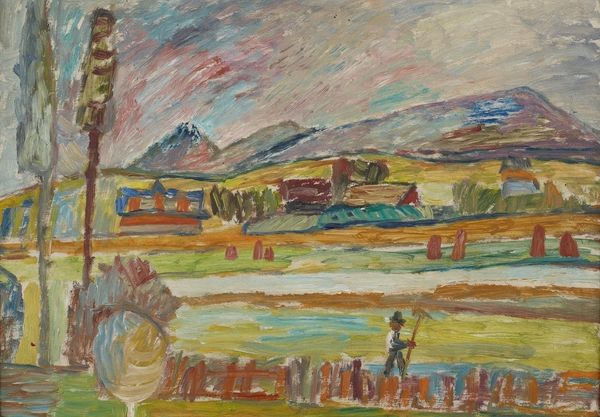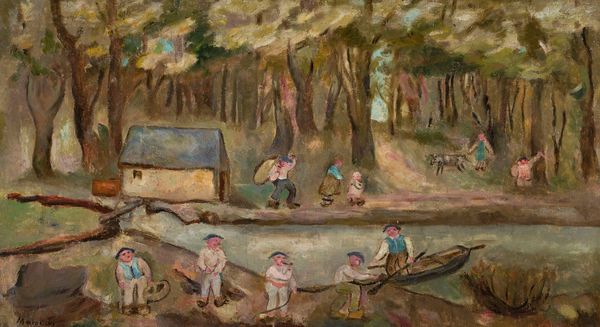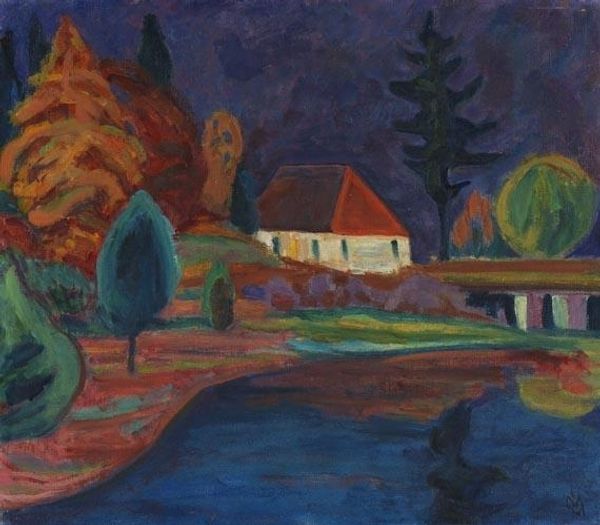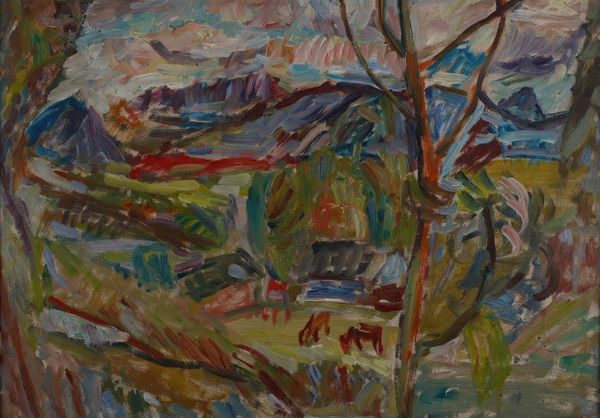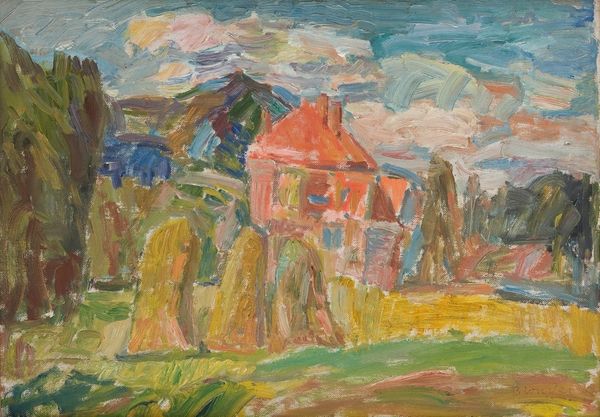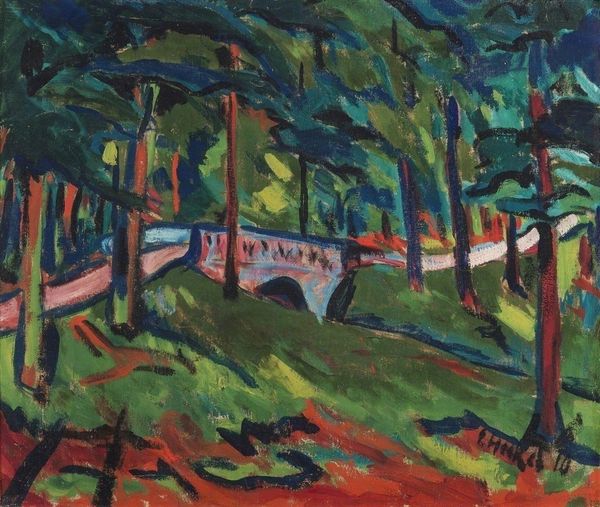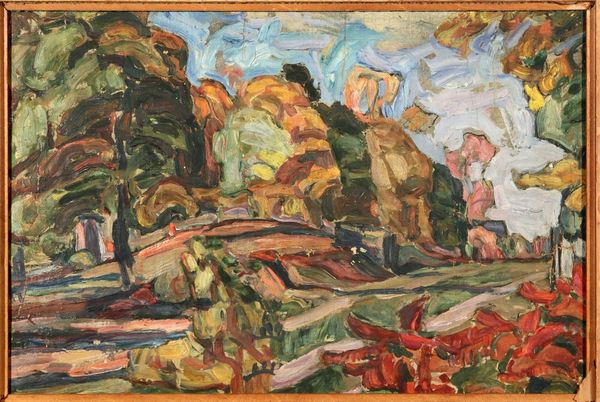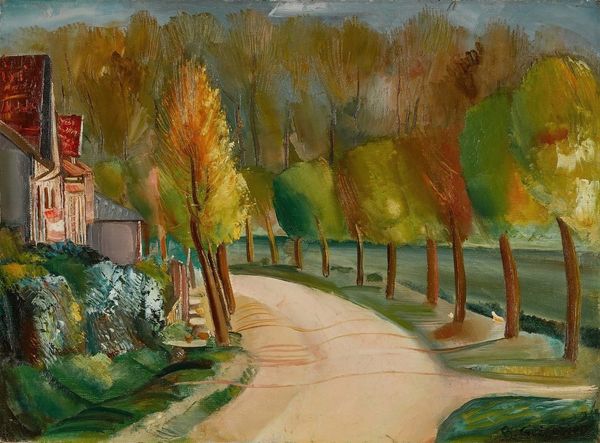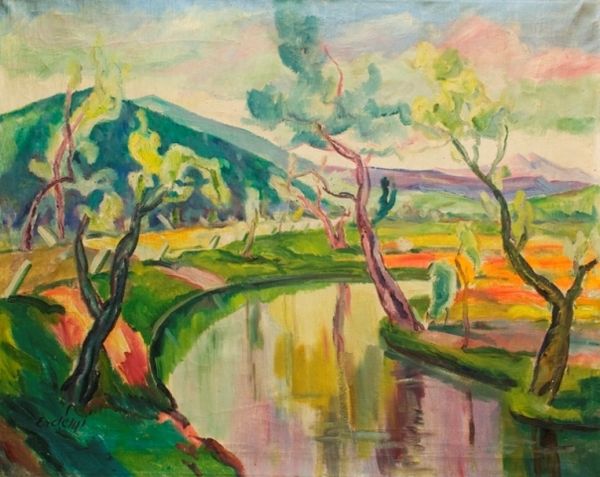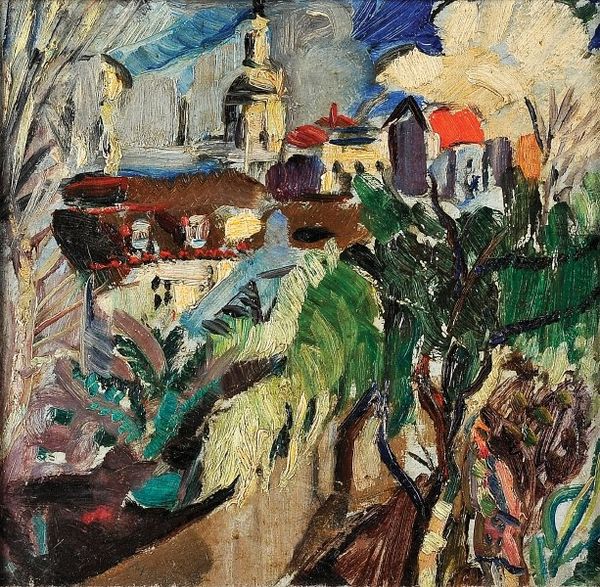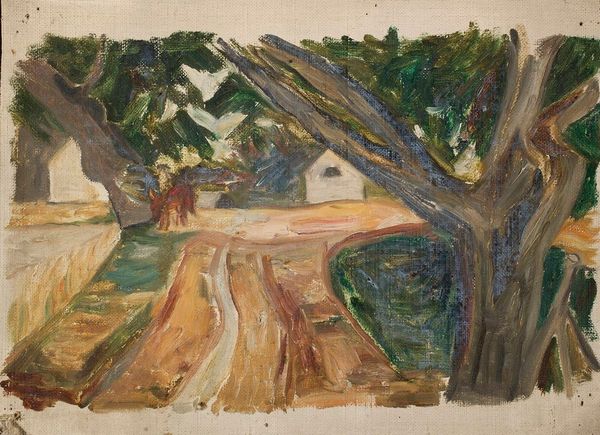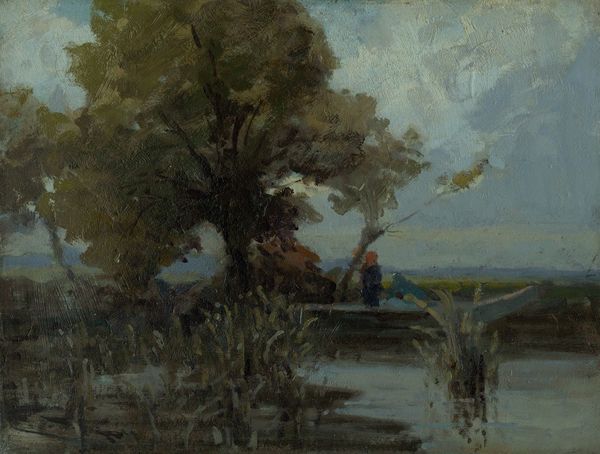
Copyright: Public Domain: Artvee
Curator: It strikes me as almost dreamlike, a rural scene rendered with a sort of joyful naiveté. The colors, while earthy, feel surprisingly vibrant. Editor: We’re looking at Sasza Blonder’s "On a Country Road," completed in 1937. Blonder was a Polish artist, and this oil painting exemplifies his approach to genre scenes. He clearly was influenced by Impressionism, although filtered through his own artistic sensibilities. Curator: Absolutely. The figures feel archetypal, representing a collective memory of rural life. Even the mountains in the distance seem to hold some symbolic weight. I keep coming back to the way he distorts perspective, creating this sense of immediacy. It is similar to some Eastern European naive painting traditions. Editor: I’m interested in how he positions these figures—presumably peasants, but perhaps representing broader social classes. They aren't idealized; they're part of the landscape, part of the process of production. Notice how their garments almost seem like the palette on the rest of the painting. How does their depiction play into broader historical narratives around rural Poland during this time? Curator: Perhaps. The lack of sharp details prompts the viewer to contemplate what defines rural society: community, the natural landscape, simple agrarian occupations. The brushstrokes have a texture that hints at a psychological space as much as it represents a place. Note too the recurring visual symbol of the road itself as a traditional icon of opportunity or escape. Editor: Indeed. While the colors evoke certain optimism, that road carries implications, and the overall impression leaves some space for tension. Was this idealized landscape in contrast with the socio-economic climate of the time for these working class individuals? I agree, though. These colors, this seemingly spontaneous painting, evokes that period. The materiality and that visible brushwork... Curator: Blonder’s blending of impressionistic brushwork and that touch of abstraction invites speculation. What do the formal structures signify, even beyond the cultural memory? Perhaps Blonder sought to use the symbol of landscape to transcend material struggles in society at that moment in history? Editor: This reminds me of the way we imbue landscapes in modern times with narratives—they carry the baggage of environmental debates, gentrification, and longing for an impossible arcadia. Curator: Yes! I suppose "On a Country Road" invites the viewer to consider how the places we occupy are intertwined with both our personal stories and cultural awareness. Editor: A fascinating point. Thank you for your illuminating insights. I know I will continue to consider that going forward as I interpret "On a Country Road."
Comments
No comments
Be the first to comment and join the conversation on the ultimate creative platform.

